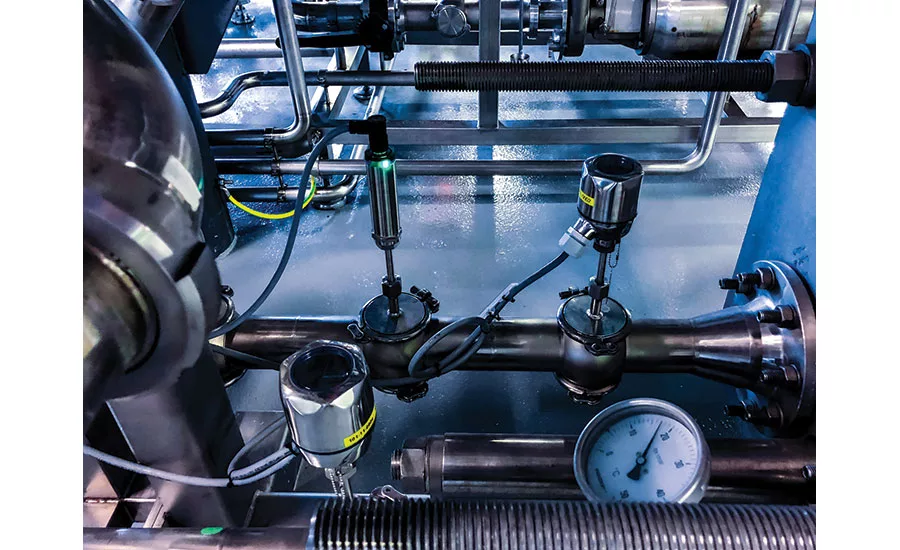Field Reports
Brewery saves time on temperature calibration
When 100 RTD sensors need to be calibrated, saving time saves money

The Endress+Hauser TrustSens RTD thermometer is normally calibrated in situ for SIP applications, but New Belgium found a fast, convenient way to calibrate with an external ceramic heater.
Photo courtesy of Endress+Hauser
The New Belgium Brewery in Asheville, N.C., has long been noted for innovation in its design and its sustainable practices.
As with all breweries, accurate temperature measurements are critical to keeping brews on spec. The brewery has close to 100 RTD temperature sensors installed in its plant, and the manual RTD calibration process is not only time consuming, but poses potential safety risks. Kyle Boughner, lead instrumentation expert, thought there had to be a better way to perform calibrations.
To keep temperatures on target, the brewery originally had installed nearly 100 Endress+Hauser TM411 RTD sensors/transmitters with a QuickNeck option. QuickNeck significantly improved the efficiency of performing calibrations through the use of a portable micro bath.
Micro bath calibrations involve the use of hot oil and an ITS-90 traceable reference thermometer. Each time the micro bath is moved to a new location, the oil has to be reheated to the appropriate calibration temperature and allowed to stabilize prior to performing a single-point calibration.
The calibrations are still time consuming, taking about 50 minutes per sensor. And, according to Boughner, transporting a hot oil bath can be a safety hazard.
Boughner learned about Endress+Hauser’s iTHERM TrustSens (TM371 and TM372) hygienic thermometers, which are typically used as a method of in-situ calibration for processes that undergo SIP on a regular basis.
The TrustSens thermometer has a built-in, high-precision ceramic reference sensor based on the Curie point of the reference material; that is, the temperature at which its ferromagnetic properties abruptly change. The change can be detected electronically by the reference sensor. For applications using SIP operations—where steam at 249.9°F is used to sterilize equipment—TrustSens uses a reference material with a Curie point of 244°F.
But Boughner’s challenge was that the brewery’s processes don’t employ SIP, so TrustSens will not calibrate automatically in situ. Instead, he came up with another easy, quick and safe method. Maintenance technicians use a simple portable ceramic block heater to perform the single-point calibration. They remove the TrustSens temperature probe from the thermowell and place it in the heater.
Once the temperature at the RTD exceeds 244°F, they turn off the heater. TrustSens then begins to cool and automatically initiates its calibration cycle. If the RTD is within New Belgium’s self-defined accuracy tolerance, a green light appears. They then reinstall the probe into the thermowell and proceed to the next RTD.
Using Endress+Hauser’s Heartbeat Technology, calibration results are captured in the compact transmitter after every successful calibration, and when needed, calibration history can be downloaded.
Connecting the sensor to the heater and performing the calibration took 15 minutes, resulting in a 35-minute time savings per RTD. “The iTHERM TrustSens is trending perfectly with our Endress+Hauser TM411s that we are comparing it to,” says Boughner. “We are not only happy with the ease of calibrations, but also with the accuracy and response times we are seeing from this RTD.”
Replacing the RTDs that are currently in the facility with TrustSens could potentially save 80+ hours in calibration time per year for a savings of about $10,000 per year in labor costs.
For more information, visit www.endress.com
Looking for a reprint of this article?
From high-res PDFs to custom plaques, order your copy today!



